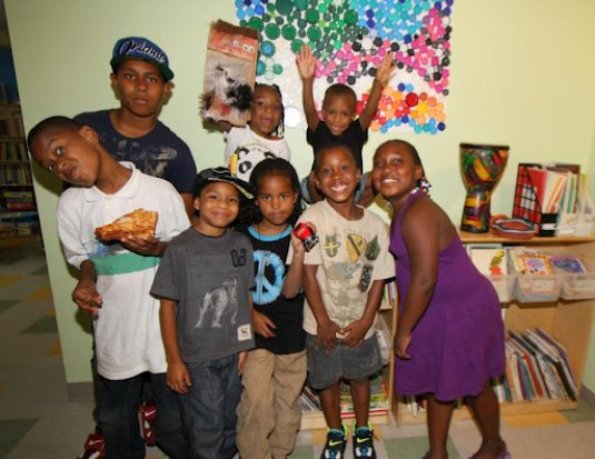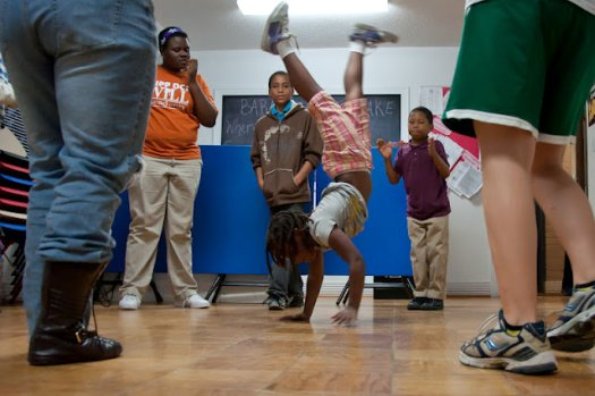A local organization gives at-risk children hope for a better life through art.
By Halle Kaplan-Allen

A young Washingtonian proudly displays the work she made in a Project Create class (Photos courtesy of Project Create DC).
Poverty is a growing epidemic in Washington. According to the National Center for Children in Poverty, in 2010, three out of every 10 children in the city were living below the poverty line.
In 2011, family homelessness in Washington increased by 18 percent. East of the Anacostia River, the child poverty rate is over 50 percent.
While it may be common knowledge that poverty is both psychologically and physically damaging, many people are not aware of the extent that these damages can cause, especially in children.
Over an extended period of time, poverty, hunger and homelessness can stunt child development and cause severe mental and psychological trauma.
Project Create DC was founded to counter these effects in our city. Almost 20 years ago, Reverend John W. Wimberley Jr. created an arts education outreach program out of Washington’s Western Presbyterian Church. It started out by hosting free, after-school art classes for at-risk children, many of whom were living on the streets.
In 2002, So Others Might Eat (SOME), a group that provides housing to low-income families, approached Project Create about collaborating. In 2003, Project Create became an independent nonprofit and, the following year, they began collaborating with Community of Hope, another program that provides housing to homeless individuals. This fall, Project Create plans to work with a total of nine housing facilities from SOME and Community of Hope.
Project Create’s motto is simple: “Create art, create community, create opportunity.” Executive Director Christie Walser believes that dance, theater, sculpture, music and comedy can be powerful forces of change in the lives of at-risk children.
Project Create uses lesson plans that teach children not only an art skill, but also a life skill — how to communicate and express yourself. The children are also given a chance to display their artwork and explain it to their peers, who provide positive reinforcement, contributing to a sense of community.
Walser points out that it’s often difficult to sell people on the importance of arts education when there are so many other areas of need in this city. According to the National Endowment of the Arts, however, at-risk children who have been exposed to the arts tend to do better in school, in social situations, and, ultimately, in their professional careers.
Project Create provides classes for up to 200 children each year between the ages of 5 and 19 who live in Wards 7 and 8. Classes meet once or twice a week and teachers are all professionally trained, allowing them to provide expert instruction and serve as mentors to the children. For more information, visit ProjectCreateDC.org.


